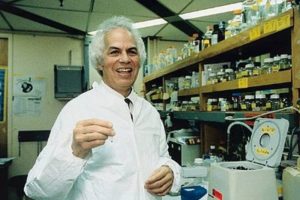The FI movement consists of a fringe group of people scattered across the globe who shun conventional consumer culture.
Could the experience of such a tiny group of individuals with deviant financial behavior and limited means someday have an outsize impact on the world?
Stranger things have happened. Read on for a far-fetched tale of improbable impact by a misfit of medicine.
The researchers found compelling evidence that the disease was spread by the practice of funerary cannibalism, where the living consumed the deceased as a part of ritual mourning.
Researchers were subsequently able to demonstrate transmission of the disease in animal models following consumption of brain matter from deceased animals. This research resulted in a Nobel Prize going to D.C. Gajdusek in 1976, who hypothesized that a “slow virus” caused this illness and linked it to the practice of cannibalism. In Papua New Guinea, contemporary influences along with with Australian laws abolishing cannibalism ended the kuru epidemic.

In 1972, Stanley Prusiner was a neurology resident at UCSF when his imagination was captivated after admitting a patient with a similarly rare spongiform encephalopathy called Creutzfeldt-Jakob disease (CJD) , also attributed to a slow virus. He read everything he could about spongiform encephalopathies like CJD, kuru and a related animal disease called scrapie that had affected livestock since the 1700s. Prusiner learned that despite multiple investigations, no viruses were ever recovered from the infectious material.
Despite minimal support, Prusiner became committed to identifying the alleged slow virus that caused spongiform encephalopathy. Following his intellectual passion, he studied scrapie in sheep and eventually created a hamster model. He looked for evidence of nucleic acid (the hallmark of DNA) from viruses in infected brain tissue – and kept coming up short, with no DNA, but large amounts of unusual proteins. In 1982, he wrote a paper suggesting the existence of a new class of infectious agent (neither virus or bacteria), a protein particle that he termed a prion. He became the target of ridicule and scorn by peer researchers in academic medicine, nearly losing tenure and forsaking grant funding but standing his ground. He became a pariah in the scientific community.
In the early 1990s, decades after undertaking his initial investigation and being outcast from most peers, Prusiner purified the “prion” protein believed to cause scrapie. Using the tools of the biotech revolution, he worked with collaborators to characterize it, describe it structurally, and model how it worked as a self-replicating protein causing disease.
The timing was fortuitous – the 1990s brought “Mad Cow Disease,” an outbreak of a CJD-like spongiform encephalopathy affecting humans in Great Britain, and suddenly the public took a very real interest in what had previously been a rare disease affecting marginalized populations. The outbreak was traced to tainted beef which had been fed repurposed animal remnants of the slaughter process (including sheep presumed to have scrapie), and the multibillion dollar global beef industry went into a nosedive as nations banned beef exports from major producers including the U.S.
Prusiner was thrust into the limelight as an expert whose familiarity with prions and the transmission of spongiform encephalopathy might halt the epidemic. Using tactics based on mechanisms Prusiner and his colleagues had elucidated over decades, authorities outlawed the practice of feeding animal remnants to livestock and culled affected herds. Public trust in the beef industry was slowly restored, and beef exports recovered.
How did I find out about this story?
In 1997, while on my neurology rotation as a third year medical student at UCSF, I attended the Department of Neurology’s party honoring Prusiner (now a professor) who had been announced days earlier as the recipient of that year’s Nobel Prize in Medicine for his work on prions. It was my small glimpse of a big man.
What does this story have to do with the FI community?
Of the many lessons one can learn from Stanley Prusiner’s experience investigating prions, two are most pertinent to the FI community. First, neglected conditions affecting marginalized populations can rapidly turn into epidemics affecting the majority. Studying remote tribes in Papua New Guinea over decades ultimately impacted your ability to enjoy your carne asada burrito without fear. Second, nonconformist pioneers pursuing their passions can unexpectedly make major contributions to societal well-being.
Taking these lessons to an extreme conclusion, it is not inconceivable that in our era of rapid technological disruption and increasing job instability, a catastrophic sense of financial insecurity could lead younger workers to seek alternative models to mainstream consumer culture.
Under such a scenario, the FI community, a tiny group with strange practices and marginal wealth, might very well provide a blueprint for financial self-reliance and long-term sustainability.
So shine on, you crazy diamonds.

